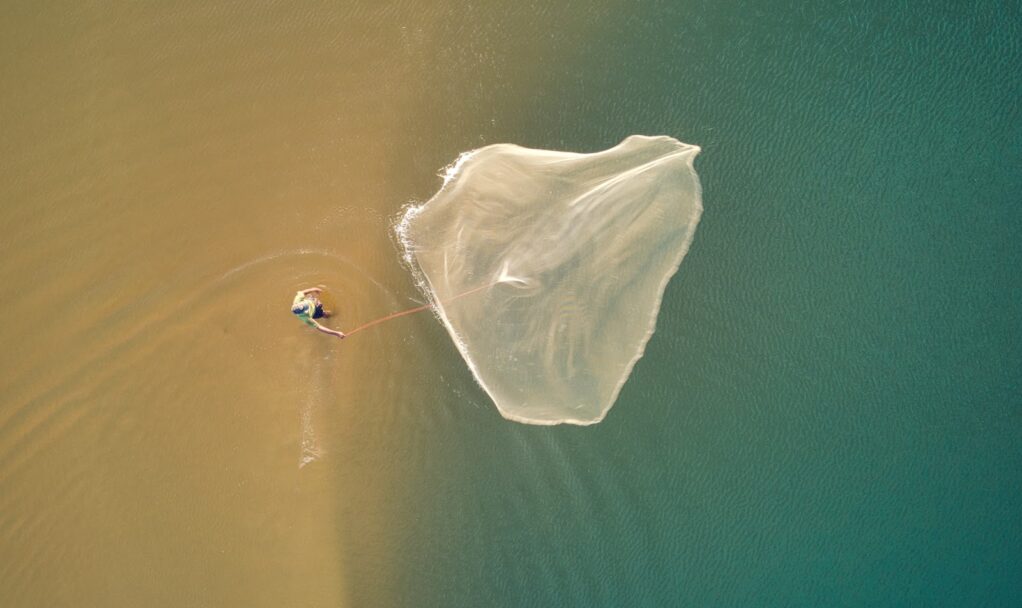Designing Environmental Solutions

When we set out to find solutions to urgent environmental problems, one of the biggest opportunities to consider is how these solutions can empower stakeholders—whether those are communities, organizations, governments, or individuals. Rather than solely focusing on technical functionality, it’s essential to design with and for the end users of a solution; this helps us to create more appropriate, equitable, and scalable solutions. Borrowing from the processes of human-centered design and design thinking, this module introduces ideation and innovation tools to spark, design, develop, and test ideas and potential solutions for environmental problems.
Through this module, you will practice applying innovation tools and methodologies; research and design new solution ideas; and finally focus on an idea, make it tangible, and iterate on it.
By completing this module, you will:
- Lead needs-finding research to empathize with the perspectives of users or people that will be involved in a solution.
- Conceive of and design novel environmental solutions by applying a suite of innovation processes and design thinking tools to an environmental problem.
- Prototype and evaluate potential ideas in order to understand what it will take for solutions to succeed, and how to iterate on the design moving forward.
- Practice the mindset of an innovator — including risk tolerance, open-mindedness, optimism, curiosity, creativity, boldness, and balancing micro- and macro-aspects of a challenge.
The materials in this module can also be downloaded here, and guidance on how to use this toolkit is here.
Course Content
-
Lesson 1: Designing for Humans
How do I understand the needs of those involved with my challenge, in order to design solutions they’ll love?
-
Introduction ViewActivity1.1
-
Designing Environmental Solutions ViewActivity1.2
-
Spectrum Activity ViewActivity1.3
-
Types of Innovation ViewActivity1.4
-
Introduction to Design Thinking ViewActivity1.5
-
The design journey in practice: LobsterLift ViewActivity1.6
-
Risks & Critiques of Design Thinking ViewActivity1.7
-
Who are you designing for? ViewActivity1.8
-
Tips for Conducting interviews ViewActivity1.9
-
Interviews Regarding Sensitive Topics ViewActivity1.10
-
Interview Practice ViewActivity1.11
-
Assignment, Part 1: User Research Pack ViewActivity1.12
-
Assignment, Part 2: Write a Problem Brief ViewActivity1.13
-
-
Lesson 2: Generating New Ideas
How do I come up with innovative ideas for environmental solutions?
-
Introduction ViewActivity2.1
-
Where do good ideas come from? ViewActivity2.2
-
Brainstorming Done Right ViewActivity2.3
-
The rules of brainstorming ViewActivity2.4
-
Bad Idea Brainstorm ViewActivity2.5
-
Crafting a “How might we” statement ViewActivity2.6
-
Try it: Brainstorm ViewActivity2.7
-
Other ideation methods and inspiration sources ViewActivity2.8
-
Tips for converging ViewActivity2.9
-
Lenses for evaluating ideas ViewActivity2.10
-
Converge ViewActivity2.11
-
Lead a Second Ideation Session ViewActivity2.12
-
-
Lesson 3: Prototyping and Iteration
How do I prototype, test, and iterate an environmental solution?
-
Introduction ViewActivity3.1
-
Make It ViewActivity3.2
-
Crazy 8’s ViewActivity3.3
-
Introduction to Prototyping ViewActivity3.4
-
Painless Failure ViewActivity3.5
-
Types of Early Prototypes ViewActivity3.6
-
Build a First Prototype ViewActivity3.7
-
Tips for Testing Prototypes ViewActivity3.8
-
Prototype Feedback ViewActivity3.9
-
Prototyping Roadmap ViewActivity3.10
-
Assignment: Prototype Iteration & Capture ViewActivity3.11
-
-
Explore More
-
Lesson 1: Additional Resources ViewActivity4.1
-
Lesson 1: Extra Resources for Educators ViewActivity4.2
-
Lesson 2: Additional Resources ViewActivity4.3
-
Lesson 3: Additional Resources ViewActivity4.4
-
Lesson 3: Extra Resources for Educators ViewActivity4.5
-
General Resources ViewActivity4.6
-



